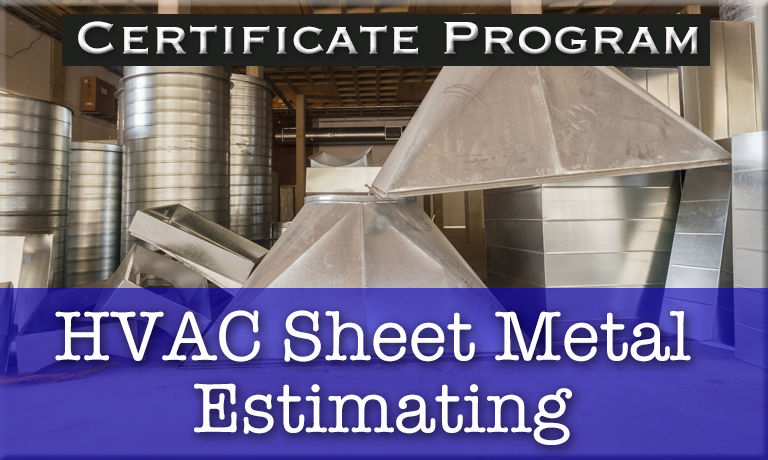Description
Students will learn how to estimate HVAC Sheet Metal for commercial and Residential Construction. In this course we will teach you everything you need to know to get an entry job as a Jr. Sheet Metal Estimator. This course is also great for senior sheet metal estimators, project managers or anyone involved in the HVAC industry who wants to understand commercial and residential sheet metal estimating.
This Course Contains over 100+ VIDEOS.
Construction Cost estimators collect and analyze data in order to estimate the time, money, materials, and labor required to construct a building or an aspect of the building like the HVAC sheet metal ductwork. Construction cost estimators prepare estimates for buildings, roads, and other construction projects. They may calculate the total cost of building a commercial shopping center, or they may calculate the cost of just one component, such as the HVAC system. They identify costs of elements such as raw materials and labor, and they may set a timeline for how long they expect the project to take. Although many work directly for construction firms, some work for contractors and engineering firms.
Construction Cost Estimator Duties
Cost estimators typically do the following:
- Identify factors affecting costs, such as production time, materials, and labor
- Read blueprints and technical documents in order to prepare estimates
- Collaborate with engineers, architects, clients, and contractors
- Calculate, analyze, and adjust estimates
- Recommend ways to reduce costs
- Work with sales teams to prepare estimates and bids for clients
- Maintain records of estimated and actual costs
Accurately estimating the costs of construction and manufacturing projects is vital to the survival of businesses. Cost estimators provide managers with the information they need in order to submit competitive contract bids or price products appropriately.
Estimators analyze production processes to determine how much time, money, and labor a project needs. Their estimates account for many factors, including allowances for wasted material, bad weather, shipping delays, and other variables that can increase costs and lower profits.
In building construction, cost estimators use software to simulate the construction process and evaluate the costs of design choices. They often consult databases and their own records to compare the costs of similar projects.
Pay
According the US Bureau of Labor Statistics;
The median annual wage for cost estimators was $65,250 in May 2019 ($31.37/Hour). The median wage is the wage at which half the workers in an occupation earned more than that amount and half earned less. The lowest 10 percent earned less than $39,380, and the highest 10 percent earned more than $111,350.
In May 2019, the median annual wages for cost estimators in the top industries in which they worked were as follows:
| Heavy and civil engineering construction | $75,890 |
| Construction of buildings | $69,240 |
| Specialty Trade Contractors | $65,650 |
Job Outlook
According the US Bureau of Labor Statistics;
Employment of cost estimators is projected to grow 11 percent from 2016 to 2026, faster then the average for all occupations.
There will continue to be demand for cost estimators because companies need accurate cost projections to ensure that their products and services are profitable.
Growth in the construction industry is expected to create the majority of new jobs for cost estimators, particularly in the specialty trade contractors industries.
This Course Includes all of the Following Courses
HVAC Sheet Metal Estimating & HVAC Spreadsheets (Course HVAC EST 500)
HVAC Sheet Metal Shop Fabrication (Course HVAC SM 100)
HVAC Sheet Metal Field Installation (Course HVAC SM 101)
HVAC Sheet Metal Takeoff (Course HVAC SM 102)
How to Read Drawings (Course DRWGS 100)












Reviews
There are no reviews yet.